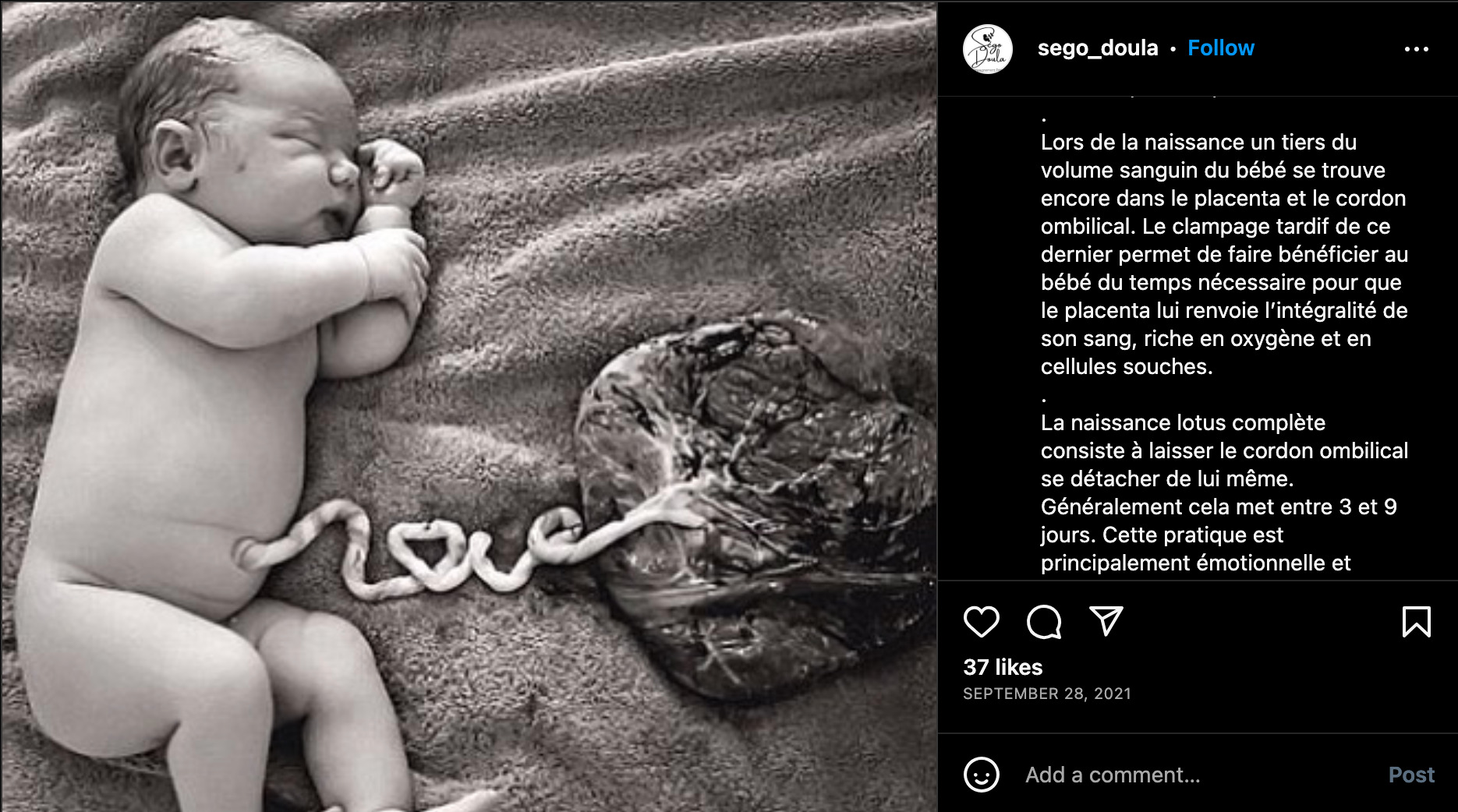The birth of the lotus – or baby lotus – designates a simple act: that of not cutting the umbilical cord after birth. Concretely, it looks like this: the baby comes out of the uterus, the placenta too, and nothing touches itself. No clamping, no cutting, the baby and placenta stay together until the cord falls off on its own, within 3-10 days after birth, sometimes even earlier.
Baby lotus, an unusual tradition in France
While this practice is still rare in France, this is not the case in some Asian or African countries. The origin of this term comes from Hindu mythology which explains it “it is from the lotus born from the navel of Vishnu that our world will emerge “. The placenta, an organ produced during pregnancy and which allows the baby to have all the nutrients it needs to grow in the uterus, also looks a lot like the leaves of this pretty flower. But what is the purpose of this practice? Without real scientific foundations, not cutting the umbilical cord after birth would anchor a stronger relationship between the baby and its parents and make childbirth less traumatic and medicalised.
Activate the alert
Photograph of a newborn baby and its placenta

In France, these lotus babies are generally born at home, as maternities do not practice this act, with some exceptions. The reason is simple: leaving the placenta attached to the baby for days can be dangerous to health. In fact, taking care of the placenta so that it does not become infected and does not transmit diseases to the newborn is technical: the expelled organ must be closed in an airtight box, a cloth must also be covered which must be changed every day, and covered with coarse salt to be preserved . The placenta rots rapidly and the exchange of infectious diseases with the baby to which it remains attached must be avoided at all costs.
What is the purpose of lotus births?
Scientifically, there would be no proven benefit to leaving the placenta and umbilical cord attached to the newborn for several days. This practice would be more spiritual for those who practice these births. Providing the necessary care for the placenta and baby, withdrawing into the newborn after birth, and having different logistics for introducing their baby in the days after birth could allow new parents to form a more fusional and instinctive relationship with their baby. In fact, you don’t carry around a baby and its placenta in its airtight box that easily. Not to mention that to avoid contagion, home visits by family members are limited.
What is the alternative to lotus births?
However, if leaving the entire cord and placenta attached to the baby has no scientifically proven benefit, WHO recommends an alternative: delayed cord clamping. Indeed, waiting one to three minutes before cutting the umbilical cord after birth would lead to “a more than 50% increase in six-month iron stores in full-term babies”. As the World Health Organization points out: Anemia in children, mainly caused by iron deficiency, leads to increased infant mortality and impaired behavioural, motor and cognitive development. (…) Studies show a 61% reduction in the rate of anemia requiring blood transfusion with delayed cord clamping. »
As long as you don’t cut the cord immediately after birth to avoid childhood anemia, that’s fine.
Another interesting possibility may also be that of cord blood donation: this initiative, practiced in many maternity hospitals, allows many children suffering from blood diseases, such as leukemia, to benefit from the stem cells present in the umbilical cord. Donating cord blood is painless for mother and child and can save many lives.
Do you like our articles? You will love our newsletters! Sign up for free on this page.
More articles about
I’m leaving
-
“When they grabbed my baby with pliers, I had the impression of being torn”: Ambre recounts her birth
-
“My 4-year-old son saw his sister born”: Anaïs tells us about her home birth without assistance
-
Here’s what to pack in the delivery room, according to one midwife
-
“When the head passed, I really felt the circle of fire”: Elisa tells us about her birth
-
Olympic athlete Tori Bowie, 32, died in childbirth
Source: Madmoizelle
Mary Crossley is an author at “The Fashion Vibes”. She is a seasoned journalist who is dedicated to delivering the latest news to her readers. With a keen sense of what’s important, Mary covers a wide range of topics, from politics to lifestyle and everything in between.




